
I was perusing some web sites the other day about strange plant facts (one of the many truly vital things I do on the average day) and found that many of the “facts” given were actually not right.
For example, although the claim is make that oak trees don’t produce acorns until they are 50 years old. I’ve grown oaks from acorns, in fact, several species, and can confirm they are very slow to bloom and produce fruit, but most will do so within 20 to 30 years of age.
So, here are some “fun facts” I believe to actually true… and if you have proof of the contrary, like me know and I’ll update the list!
- There are some 320,000 species of plants, found on all continents, even Antarctica. Since more are discovered every year, that number will increase over time.
- 90 % of the foods people eat come from just 30 plants, yet there are over 80,000 edible plants in the world.
- The typical mature tree can provide enough wood to make 170,100 pencils.
- Cabbage, broccoli, kale, cauliflower and kohlrabi are all the same species of plant (Brassicaoleracea), but were selectively bred for different uses, to the point where they no longer even resemble one another.
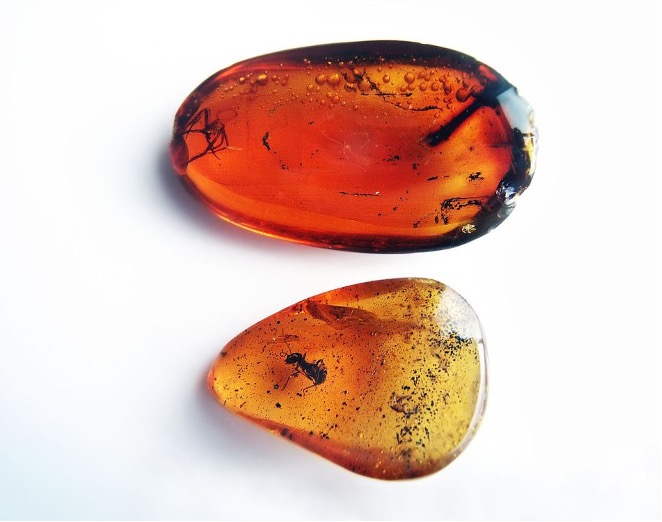
Amber sometimes contains the fossils of insects and other invertebrates that were trapped in resin millions of years about. Photo: Brocken Inaglory, Wikimedia Commons
- Amber is fossilized resin from ancient trees.
- If apples float, it’s because they contain a lot of air: 18% air or more.
- The smell of freshly-mowed grass is actually a plant distress call.
- The fastest-growing plant is the world is Burmese bamboo (Bambusa burmanica). It can grow up to 91 cm (35 in) per day. That’s almost 4 cm (1.5”) an hour. You could actually watch it grow.

Sulphenic acid irritates the eyes. Photo: dpeh.in
- If onions make you cry when you chop them, it’s because they give off sulphenic acid, a serious irritant, when you cut them.
- The word banana comes from the Arabic word bananand means finger and was given because of the finger like fruit. And a cluster of bananas is called a hand.

Swollen baobab trees are mostly water. Photo: aduna.com
- The huge baobab trees of Africa and Madagascar are composed of up to 76% water at the end of the rainy season and can hold up to 120,000 liters of water in their swollen trunk and branches, enough to fill several backyard swimming pools.
- Elephant grass (Cenchrus purpureus), native to Africa, is called elephant grass because, at 15 feet (4.5 m) high, it’s tall enough for elephants to hide behind… and they do! However, they like to eat it and thus give themselves away.
- The caffeine of coffee and the theine of tea evolved as insecticides to keep insects from eating the plant.
- During the Tulipomania period of the 1600s in the Netherlands, some tulip bulbs were worth more than their weight in gold.
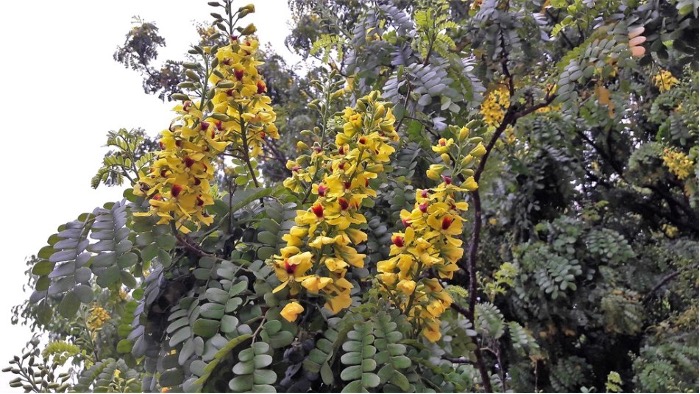
Brazil wood (Paubrasilia echinata) gave Brazil its name. Photo: flickriver.com
- Brazil is named after a tree, brazil wood (Paubrasilia echinata,formerly Caesalpinia echinata). It is now the official tree emblem of that country.
- The first carrots were purple rather than orange.
- Oak trees are struck by lightning more than any other tree.
- Grass plants make up 26% of all plant life on earth.

Vanilla orchids are nearly impossible to bloom indoors, so gardeners outside of the tropical can’t really expect to produce their own vanilla extract. Photo: orchidinsanity.com
- The only orchid commonly used for food is the vanilla orchid (Vanilla planifolia and others), a climbing plant with edible mature pods.
- About 85% of the world’s plant life is found in the ocean.
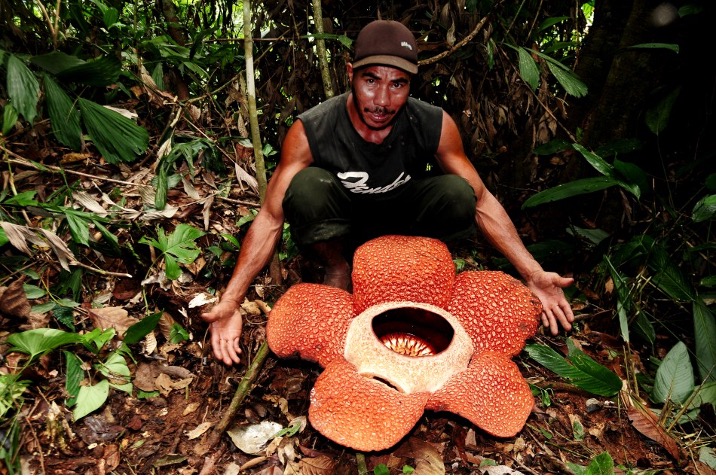
The world’s largest flower. Photo: Rahmat andriansa, Wikiimedia Commons
- The world’s largest individual flower is the rafflesia (Rafflesia arnoldii). It can grow to be 3.3 ft (1 m) in diameter and can weigh up to 24 lb (11 kg).
- A 2,500 square foot (232 m2) lawn produces enough oxygen for a family of 4.
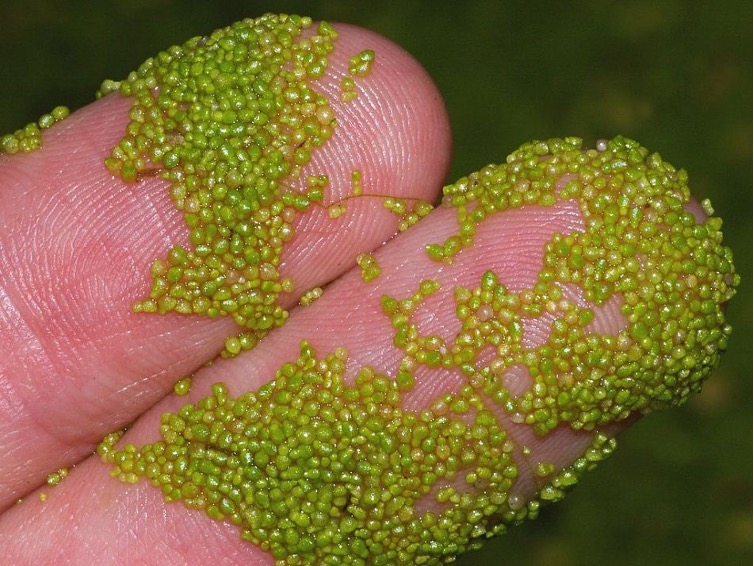
Each of the green dots is an adult plant of Wolffia. Photo: Christian Fischer, Wikimedia Commons
- The world’s smallest flowering plant, 0.004–0.008 inches (0.1–0.2 mm) in diameter, is Asian watermeal (Wolffia globosa). It’s closely related to duckweeds.
- It has been estimated that 64% of the world’s plant species are endangered.
- Good landscaping can increase the value of a house by up to 20%.
- The first wine grapes were cultivated some 8,000 years ago in Mesopotamia.
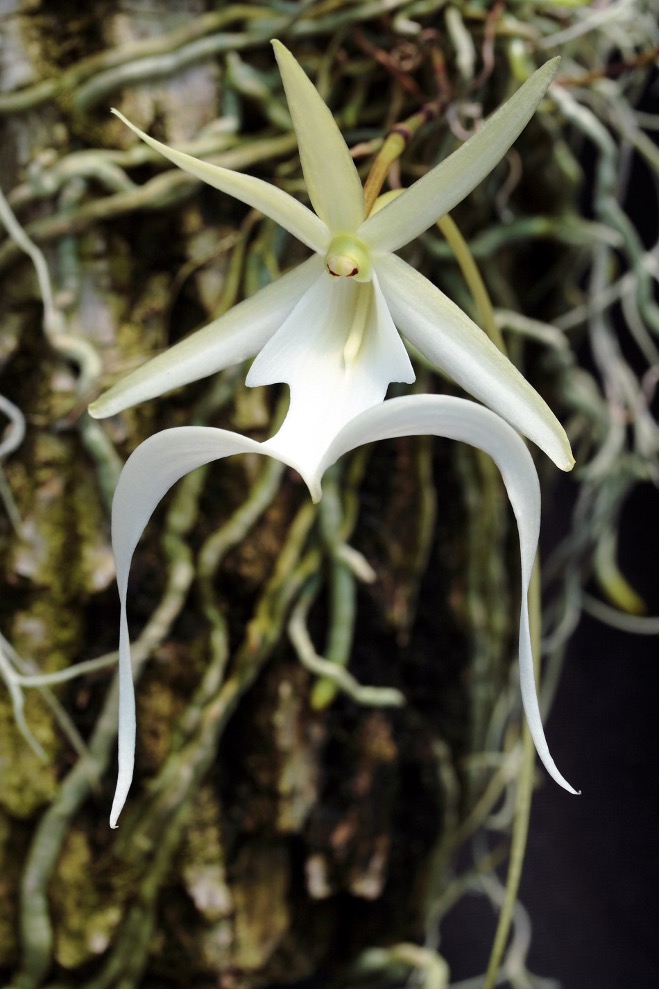
Ghost orchid. Photo: NC Orchids, Wikimedia Commons
- The ghost orchid (Dendrophylax lindenii) of Florida and the Caribbean has no leaves. It carries on photosynthesis through its green aerial roots.
- Out of the 1750 species of cacti that exist, 1749 are native to the New World.
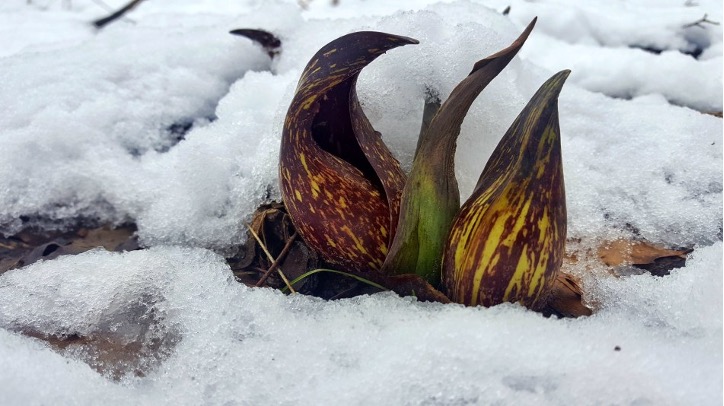
Skunk cabbages melt the snow around them. Photo: cdoty, naturetreasurehunt.com
- The skunk cabbage (Symplocarpus foetidus) produces so much heat when it blooms in late winter that it melts the snow around it and raises its internal temperature to about 72 °F (22 °C). This can be up to 63 °F (35 °C) higher than the temperature of the surrounding air.
- Russian scientists were able to germinate 32,000-year-old seeds of narrow-leaved campion (Silene stenophylla) that had been stored frozen in a ground squirrel hibernation burrow under the permafrost in Siberia. The plants grew, bloomed and produced viable seed.
